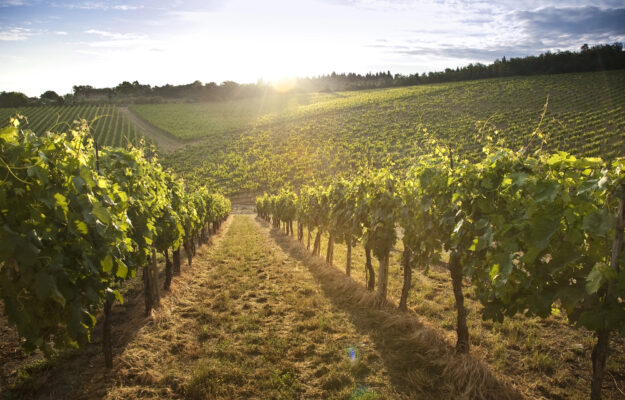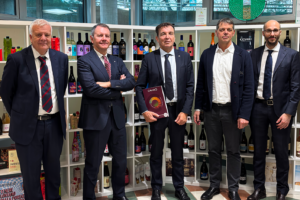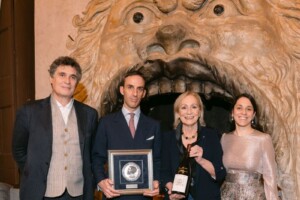Organic agricultural areas in Italy are growing, but organic vineyards are decreasing, with a decline all attributable to wine grapes, while table grapes are growing. This is the picture taken by “Bio in figures” 2024, the Ismea Report presented, today in Bracciano, Umbria. And according to which, in 2023 in Italy the Sau (usable agricultural area) grew by 4.5% on 2022, touching 2.5 million hectares, almost 20% of the national Sau, with the target of 25% to be reached by 2030 according to the “Farm to Fork” Strategy getting closer. On the other hand, organic hectares planted with vines, including those converted (102,925) and in conversion (30,081), are down 2% on 2022 (for a total of 133,007), with an overall loss of -2,660 hectares, all attributable to wine grapes (-3,850 hectares), as organic vineyards for table grapes grew by 1,189 units (+47.1%), reaching 3,716.
In any case, overall, the 2024 figure, the first year of application of the new CAP, is positive, which saw growth in areas, but also in the number of operators (producers, processors, importers) by 1.8%, although a much milder pace than the previous year’s +7.7 %. “With the transition to the new programming of the Common Agricultural Policy and the change of some rules”, the Report points out, “some critical issues have emerged both on the side of regional administrations, which have had to overhaul a proven organizational machine after years of rural development policies, grappling for the first time with the programming of first-pillar measures, and on the side of beneficiary farms, in the difficult task of navigating the dense network of constraints, commitments and interventions, with the latter sometimes competing with each other due to the non-cumulability of aid. A scenario made even more complex by the tightening, protracted into 2023, of production costs, which has accentuated dependence on public subsidies in the sector, in a context aggravated by the adverse climatic events that have affected several areas of the country, making operations in the countryside, especially for organic farms, more onerous and difficult even in agronomic management”.
“The report presented today”, said Agriculture Undersecretary Luigi D’Eramo, “is further confirmation of our country’s consolidated leadership at the European level and beyond. Organic Italy continues to grow, both in terms of area and number of operators. Almost 20% of agricultural Sau is organic, a figure that projects us to reach before 2030 the EU target of 25%. A positive trend”, D’Eramo continued, “that can further improve thanks to the many measures put in place in recent months: from the approval of the National Action Plan for organic production to the measures to support biodistricts and organic supply chains. We now aim to implement the Italian Organic Brand as soon as possible: combined with proper information and communication, it will be able to support a revival of domestic consumption and growth in foreign markets, thus continuing to be a leader in the sector in the future”.
In detail, the “Bio in Figures” 2024 Report edited by Ismea in collaboration with Bari's Ciheam in the Ministry of Agriculture’s “Dimecobio” program, shows an organic Sau predominantly oriented to arable crops (42.1%), ahead of meadows and pastures (29.7%), permanent crops (22.8%) and vegetables (2.5%). Area growth was mainly in meadows and pastures and industrial and fodder crops, while protein and cereal crops lost hectares. Horticultural crops grew, albeit at a more muted pace, in a year that, on the other hand, confirmed the overall organic area of permanent crops, despite reductions in vines, citrus and fresh fruit, offset by increases in olives and nuts. The increase in Sau has mainly affected the central and northern regions. The South still maintains the highest incidence, at 58 percent, but there is a gradual rebalancing of the geographical distribution of areas, with the North-Central distribution almost doubling its investments in organic in 10 years. The most recent evolution shows, but in a few cases, situations also in counter-trend, evidently due to the different policies adopted by regional administrations. Emblematic is the case of the Autonomous Province of Trento, which lost more than 40% of its organic Sau in 2023 due to the Managing Authority’s decision to grant payments reserved for forage and pasture areas to farms with livestock only, as part of a strategy to strengthen local organic livestock farming. A decline, albeit small, was also seen in Emilia-Romagna - despite the substantial budget on organic interventions - a phenomenon that experts tend, however, to associate with last year’s catastrophic events, particularly the devastating flood of May 2023.
In addition to areas, operators increased, reaching a total number of 94,441, 1,642 more than 2022. This phenomenon mainly affected the 84,000 farms (89% of the total number of organic operators) and, among them, particularly the component of producers/preparers, confirming the tendency to introduce on-farm first processing activities in order to retain a greater share of added value. Finally, domestic consumption of organic products, relating only to the large-scale retail channel, touched 3.8 billion euros, registering an increase of 5.2% over 2022 (this is the strongest growth rate in recent years), albeit with unchanged volumes. Comparison with the general dynamics of food purchases, which grew by 8.1% in value, but fell by 1.1% in quantity, highlights the lower inflationary push of the organic department compared to the dynamics observed for the conventional cart.
“Organic is central to Europe’s and Italy’s green ambitions”, said Ismea President Livio Proietti, “and this is also demonstrated by the plurality of regulatory interventions and strategic actions that our country has reserved for the sector, including the National Plan for Organic Production, launched this year, and the 2023 decree that exalts the role and importance of biodistricts, such as that of Lake Bracciano and Martignano, whose qualities we were able to appreciate today. After difficult years, mainly due to the sharp price increases that followed the energy shock of 2022, the sector must now regain appeal in the eyes of consumers”, added Proietti, “who are today bewildered by the many products that boast messages alluding to health and sustainability, but unlike organic, are not subject to strict controls and strict production rules”.
Copyright © 2000/2026
Contatti: info@winenews.it
Seguici anche su Twitter: @WineNewsIt
Seguici anche su Facebook: @winenewsit
Questo articolo è tratto dall'archivio di WineNews - Tutti i diritti riservati - Copyright © 2000/2026









































































































































































































